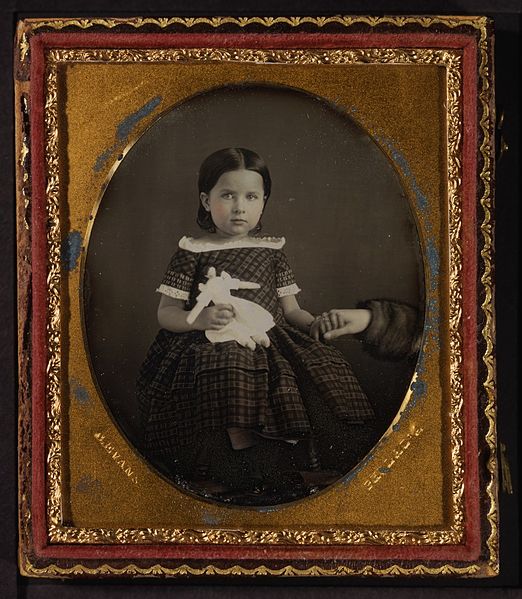
Figure 1 – Daguerreotype by C. Evans of a girl with her doll and holding her mother’s hand. From the Wikimedia Commons and the George Eastman House (online), no known copyrights.
I have spoken a great deal about captured moments of the past and how photography gives a sort of immortality preserved in emulsion. There is however, another side to all of this – no more so than when we look at daguerreotypes. The viewing of daguerreotypes evokes a complex set of emotions, and these speak in a profound way to the meaning of photography.
Part of this is that the people are frozen, often awkwardly, in time. They were made to sit in specially built chairs as they endured long exposures. Often, they do not look comfortable in their clothing. And it is rare, given the formalities of the day, to see even the slightest smile. It is a strange feeling to look at a daguerreotype of a young man or woman in his/her prime. You invariably start to wonder about their lives and become just a bit teary-eyed that whatever there was of hope, expectation, and happiness is turned to dust and corruption. I have the same feeling when I look at the portrait of my grandmother when she was 24 that hangs in my study. My mind has trouble equating that image with that of the wrinkled old lady that I took almost six decades later. “Time doth transfix the flourish set on youth.”
Daguerreotypes can get especially maudlin, when it comes to post mortem photographs of children, laid out for one last, or more often the only, photograph. They are often in the arms of a grim and saddened parent. Your heart just breaks at such images, even though they break our modern denying conventions about death. The nineteenth century was a tough time to live or to survive as a child – so many deadly childhood diseases. But these people endured – they had no other choice.
Some of the most striking of daguerreotypist portrait subjects was that of Figure1 – the child with a toy. And I have chosen a girl with her doll(y), because a little girl holding a dolly really mimicked a mother with her child, and the mother is often in the same photograph. Indeed, here the girl is holding her mother’s hand – a connection both to her present childhood and future adulthood. The nineteenth century was not a great time to be a child. It was full of dreaded diseases and strict rules of orthodoxy. Time was short, and clothes clearly uncomfortable. Here we look at the upper and middle class children. The plight of the lower classes, Jacob Riis’ children was grimmer beyond comprehension.
These little children seem to cry out to us. The fleeting journey of the daguerreotype subject from youth to old age in our imaginations is here magnified. We have in addition the very fleeting journey to adulthood, after which you must “put aside childish things.” There little lives were filled with hopes, dreams, and expectations. “Though [these] dreams… lost some grandeur coming true.” Therein lies the profound power of the photograph. They evoke immense empathy within. We relate to, indeed become, these little children.
Such were my thoughts this morning as I drove through historic Concord, Massachusetts. I passed first what is referred to as “The Old Burial Ground.” This is the last resting place of so many souls who predated photography. Then I passed the “Sleepy Hollow Cemetery” with its famous “Authors’ Ridge,” where the great literati of Concord’s past lie in repose, Branson and Louisa May Alcott, Ralph Waldo Emerson, and Henry David Thoreau. Daniel Chester French, the sculptor of the famous statue of Abraham Lincoln in the Lincoln Monument, lies on a separate ridge not far from his magnificent monument to brothers who died in the American Civil War, the “Melvin Memorial.” A daguerreotype of any of these is immediately recognized. But at Sleepy Hollow they are surrounded by the many faces of unidentified daguerreotypes. These are the dreamers captured in amalgam.
